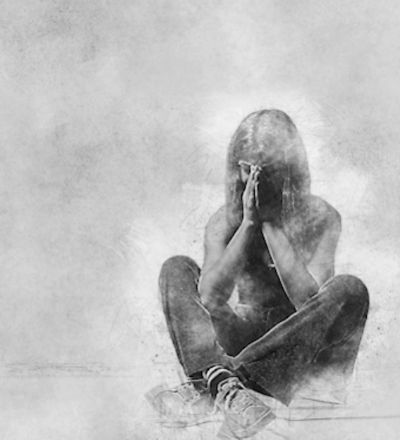Donate
These reports represent hundreds of hours of research by the Unsilenced Investigative Research Team. As you review this report, please consider donating. Your contribution will help us continue our work advocating for survivors and youth. Every donation makes an impact, no matter the size. Thank you for your support!
Completed by:
The Unsilenced Investigative Research Team
The Troubled Teen Industry in Indiana
Impact Report
2022
Impact Report
2022
Introduction
The ‘troubled teen’ industry is a network of residential programs that claim to provide treatment for the behavioral and developmental needs of youth. The industry’s lack of transparency and accountability has led to widespread abuse of youth, resulting in hospitalizations, prolonged trauma and death.
Today, there are an estimated 120,000 – 200,000 minors in residential programs across the United States. These youth are placed each year by state child welfare agencies, juvenile justice courts, mental health providers, refugee resettlement agencies, school districts’ individualized education programs, and by parents.
Many of these youth have trauma histories, which are only exacerbated by being removed from their communities and institutionalized. Youth with lived experience describe these programs as being carceral, harsh, and abusive.
An estimated $23 billion dollars of public funds annually are used to place youth in residential programs. Daily rates for residential treatment ranges from $250-$800, costing up to $292,000 per year, per child.
It is overwhelmingly clear that our communities and agencies are over-relying on residential placements that are negatively impacting the youth they serve.
Introduction
The ‘troubled teen’ industry is a network of residential programs that claim to provide treatment for the behavioral and developmental needs of youth. The industry’s lack of transparency and accountability has led to widespread abuse of youth, resulting in hospitalizations, prolonged trauma and death.
Today, there are an estimated 120,000 – 200,000 minors in residential programs across the United States. These youth are placed each year by state child welfare agencies, juvenile justice courts, mental health providers, refugee resettlement agencies, school districts’ individualized education programs, and by parents.
Many of these youth have trauma histories, which are only exacerbated by being removed from their communities and institutionalized. Youth with lived experience describe these programs as being carceral, harsh, and abusive.
An estimated $23 billion dollars of public funds annually are used to place youth in residential programs. Daily rates for residential treatment ranges from $250-$800, costing up to $292,000 per year, per child.
It is overwhelmingly clear that our communities and agencies are over-relying on residential placements that are negatively impacting the youth they serve.

Indiana Statistics
$37+
Million Dollars
Indiana spends every year placing youth in Residential Facilities despite evidence indicating that these facilities are ineffective.
$478
Per Day Per Child
Indiana pays facilities on average $478 per day per child. This increased nearly 14 percent since 2018.
7,624
Children Under 12
placed in residential facilities through Child Welfare programs in 2019
1,155
Juvenile Justice Youth
placed in residential facilities through Juvenile Justice programs in 2019
- 783 minors were committed to a residential facility as part of a court ordered disposition
- 333 minors were detained in a residential facility while awaiting a court hearing, adjudication, disposition or placement elsewhere
- 27 minors were voluntarily admitted to a residential facility in lieu of adjudication as part of a diversion agreement

Indiana Statistics
$37+
Million Dollars
Indiana spends every year placing youth in Residential Facilities despite evidence indicating that these facilities are ineffective.
$478
Per Day Per Child
Indiana pays facilities on average $478 per day per child. This increased nearly 14 percent since 2018.
7,624
Children Under 12
placed in residential facilities through Child Welfare programs in 2019
1,155
Juvenile Justice Youth
placed in residential facilities through Juvenile Justice programs in 2019
- 783 minors were committed to a residential facility as part of a court ordered disposition
- 333 minors were detained in a residential facility while awaiting a court hearing, adjudication, disposition or placement elsewhere
- 27 minors were voluntarily admitted to a residential facility in lieu of adjudication as part of a diversion agreement
An Indiana Problem
A team of researchers reviewed 230 studies of residential treatment facilities from around the nation and found there was no evidence that they were effective.
In 2019, Indiana was home to 1,567,974 minors, including 18,026 minors in foster care.

Illustration by Spencer Holladay, USA Today Network; Getty Images
“Many kids don’t get help. Others never needed institutional care in the first place.”
Fred Clasen-Kelly, Amritpal Kaur Sandhu-Longoria, Rachel Berry, Brad Zinn, Kristen Johnson, Brian Gordon
The Fayetteville Observer
Current Oversight
Indiana requires Residential Facilities serving minors to obtain a license but does not provide adequate oversight, leading to maltreatment and child fatalities. There are 1,800 Child Protective Service Workers in Indiana.
It issues licenses to the following residential treatment facility types as Designated QRTP or QRTP-122
- Child Caring Institution (CCI) (private or public)
- Group Home (GH)
- Private Secure Facility (PSF)
Indiana has 122 Licensed Residential Facilities with a total capacity for 2,517 youth. The facility types with the highest capacity for housing youth in Indiana are:
- 42 Child Care Institutions Long Term – Capacity 1,179 Minors
- Long Term – Capacity 10,316 Rule 465 IAC 9
- Capacity exceeds ten (10) youths
- Building must meet I-2 building code
- Program is long term – generally over sixty (60) days
- Information on child must be provided prior to admission so the facility can determine if they can provide necessary services
- An individual treatment plan must be developed within forty five (45) days of admission and reviewed at least every six (6) months
- Emergency – Capacity 282 Rule 465 IAC 10
- Capacity exceeds over ten (10) youths
- Building meets I–2 building code
- Program is for emergency shelter services not to exceed sixty (60) days
- Little or no information available on child at time of placement
- A care plan to deal with immediate issues must be written within twenty four (24) hours of admission, or the next working day.
- Long Term – Capacity 10,316 Rule 465 IAC 9
- 26 Private Secure Care Institutions – Capacity 946 Minors
- Capacity exceeds ten (10) youths, but no more than fifteen (15)
- Building must meet I-3 building code
- Program is long term- normally over sixty (60) days
- Youth must meet criteria of being gravely disabled with behaviors capable of being harmful to themselves or others which require a locked facility
- 54 Group Homes – Long Term Rule – Capacity 392 Minors
- Houses a maximum of ten (10) youths
- Building was originally a one or two family dwelling
- Program is long term – normally over sixty (60) days
- Information about child must be provided prior to admission to determine if program can meet child’s needs
- An individualized treatment plan must be developed within forty five (45) of admission and reviewed at least every six (6) months
Abuse and Neglect
Youth residing in Residential Facilities in Indiana are at-risk for abuse, neglect and long-term harm.
Abuse and Neglect
August 2, 2019 – 13 Investigates uncovered patterns of abuse, neglect in group homes.
Indiana determined that at least 9 Group Home and Residential Facility Staff Members and 43 Foster Parents caused or knowingly allowed the maltreatment of a child in 2020
Maltreatment Types of Victims, 2020
- Victims – 22,648
- Neglect Other Physical Abuse – 19,622
- Maltreatment Sexual Abuse Sex Trafficking – 2,542
- Total Maltreatment Types – 23,792
Child Fatalities by Submission Type, 2020
- Child Fatalities Reported in the Child File – 56 Child Deaths
- Child Fatalities Reported in the Agency File – 0 Reported
Child Protective Services Workforce, 2020
- Intake and Screening Workers
- Workforce – 124
- Investigation and Alternative Response Workers
- Workforce – 776
- Intake, Screening, Investigation, and Alternative Response Workers
- Workforce – 900
Media Coverage
- Sep. 3, 2015 More details released in Indiana boarding school abuse allegations WLKY Mark Vanderhoff
- Sep. 4, 2015 Indiana pastor accused of battering kids in boarding school Religion News Service Matthew Glowicki
- Jun. 18, 2018 Evaluation of the Indiana Department of Child Services The Child Welfare Policy & Practice Group
- Feb. 24, 2020 16 News Now investigates: Former students speak out against religious reform school 16 News Now WDNU Karli Luca
- Mar. 28, 2020 Hephzibah House Permanently Closed, When And Why Not Answered The Times Union Online Amanda Bridgman
- Jul. 9, 2021 A century of trauma at U.S. boarding schools for Native American children National Geographic Erin Blakemore
- Oct. 11, 2021 The Shadow Penal System for Struggling Kids The New Yorker Rachel Aviv
- Oct 27, 2021 Indiana asks for court of appeals review in lawsuit seeking change in foster care system Indianapolis Star Holly Hayes
- Jan. 27, 2022 Bill to ban transgender students from school sports passes Indiana House Fox 59 Indiana Politics Associated Press
- Apr. 11, 2022 Nine new lawsuits allege torture, starvation and other abuse at Missouri boarding school Kansas City Star Judy Thomas & Laura Bauer
- Apr. 5, 2022 Indiana DNR to investigate deaths at Native American residential schools 13 WTHR Madison Stacey
- Apr. 29, 2022 Foster home shortage means siblings are having to be separated Nextar Media Ethan Dahlen
“Every child deserves to be with a family,” said Terry Stigdon, director of the Indiana Department of Child Services. “That’s not only best for them in the short term, but it provides better long-term outcomes.”
Additional Information
Unsilenced Program Database: Indiana Programs
Contact: info@unsilenced.org
The information provided within UnSilenced.org is for general informational purposes only. All information is provided in good faith. However, we do not warrant, endorse, guarantee, or assume responsibility for the accuracy or reliability of any information offered by third-party posters, testimonials, comments, or submissions. Most information posted reflects the opinion of the writer and does not directly reflect the views, or positions of the owners of UnSilenced.org
Read More
